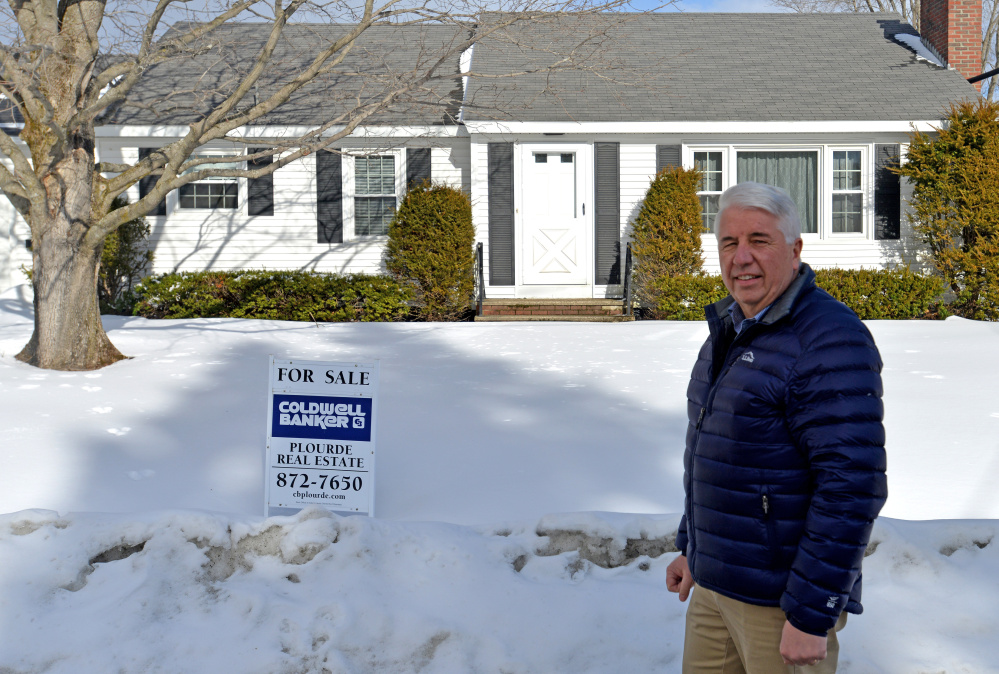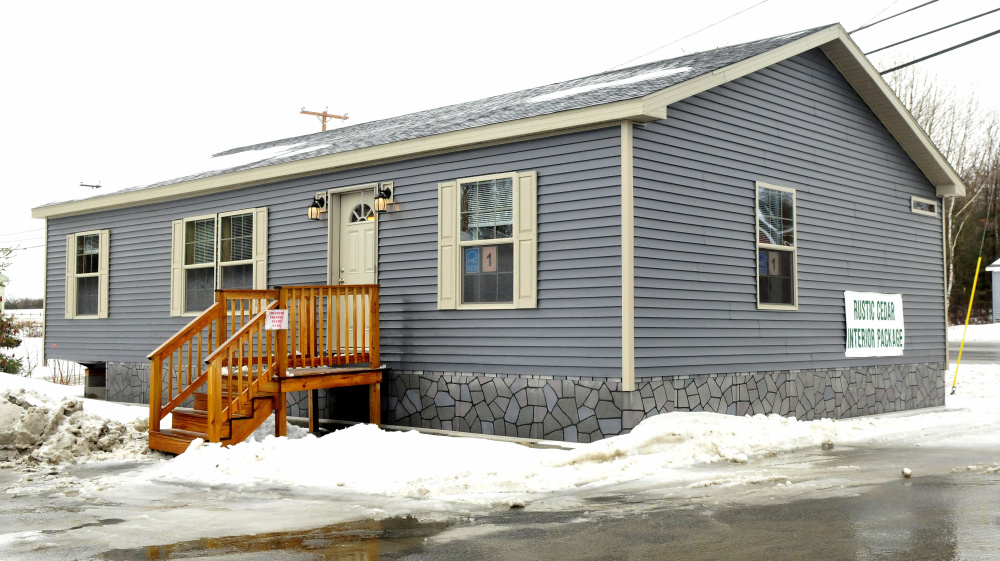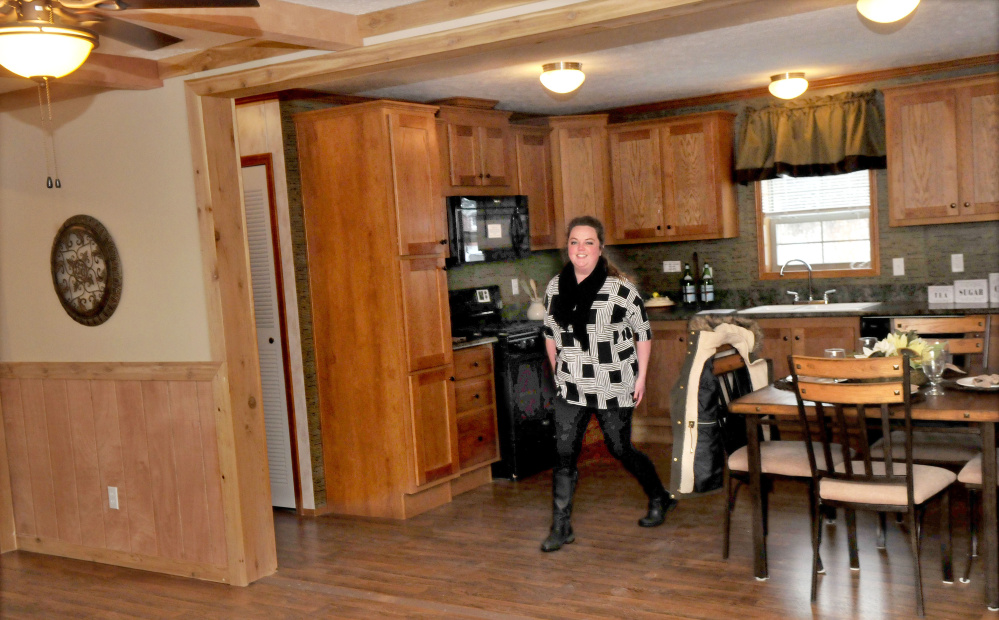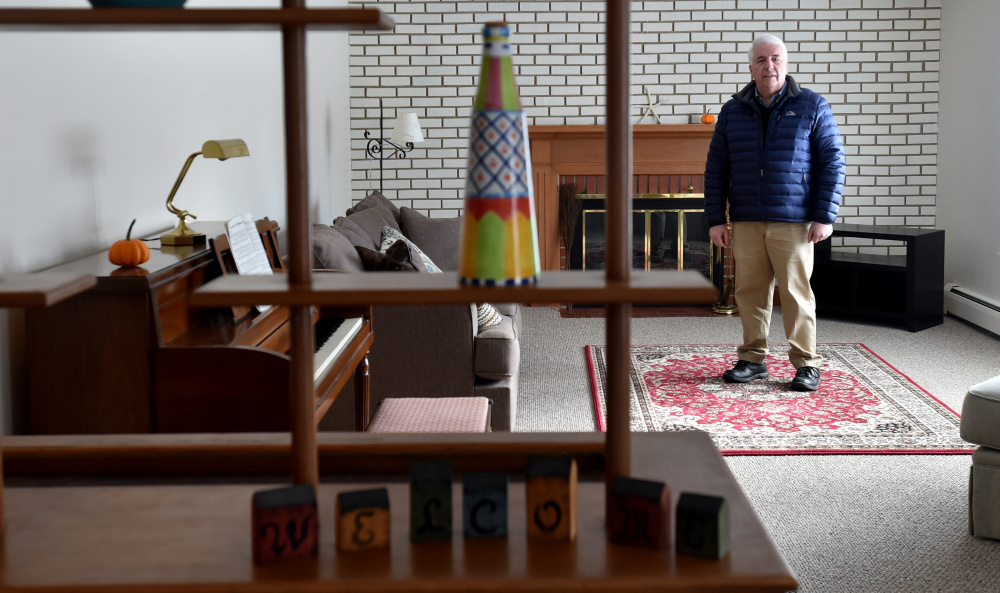Waterville and nearby Winslow are poised for population growth and tax base expansion as a number of promising economic development initiatives start to ramp up. But while the neighboring communities on opposite sides of the Kennebec River see growth potential, area leaders are warning that the Waterville area’s shortage of housing stock and unfordable prices could pose a barrier.
Spurred by a pair of $10 million investment grants from Colby College and the Harold Alfond Foundation, a Waterville revitalization project could change the entire face of downtown. Colby has bought five vacant, deteriorating buildings and plans to redevelop them; the college is also planning a residential complex for students on part of The Concourse; Bill Mitchell, the owner of GHM Insurance Agency, has bought two buildings on Common Street; Colby bought the former Hains building on Main Street, which will house Collaborative Consulting, a technology firm that plans to have 200 workers in the downtown area within the next five years; and Colby also tore down the former Levine’s clothing store to build a boutique hotel and restaurant by 2018.
While Waterville City Manager Michael Roy said it’s hard to speculate how the many Colby projects will affect the population over the next few years, he does hope they will provide a boost.
“I do think that Waterville’s population does need to grow,” Roy said.
Waterville’s population is nearly 16,000, with about 6,350 households; and Winslow’s is about 7,600, with about 3,230 households, according to the data from the U.S. Census and Maine State Housing Authority. Compared with Census data from the year 2000, Winslow’s population has slipped by about 150, while Waterville’s has edged up by about 400.
If the revitalization does what Waterville and Winslow hope — draws in more businesses, more workers and a larger population base — housing is necessary. But Waterville might be running out of options.
Waterville and Winslow officials are looking at ways to create more housing options, but the need is immediate.
“We’ve seen the inventory in our multiple listing services drop off,” said Don Plourde, owner of Coldwell Banker Plourde Real Estate. Plourde said the number of houses for sale from Realtors in the Waterville area is down 30 percent from this time last year.
Plourde said the reason for that is a strong market where houses were selling quickly.
“Now we’re getting to a point where we really need some new construction,” he said, adding that it’s been about eight years since the area has seen much building of new homes. “I think we’re going to be running out of inventory.”
Mechele Dickerson, a professor at Texas Law at the University of Texas at Austin, said the issue of affordable housing no longer concerns just the poor. Dickerson is an expert on consumer debt and the author of “Homeownership and America’s Financial Underclass: Flawed Premises, Broken Promises, New Prescriptions.”
“One of the problems when we use the term ‘affordable housing’ now is everyone thinks of ‘those people,’ and instinctively go to the poor,” Dickerson said in a phone interview Friday. “Affordable housing is no longer just a problem for the poor. It’s not a Section 8 problem.”
She said she’s seen this problem arise in cities such as Austin, where university professors can afford to live in the high-priced city, but not university staff.
“Whether it’s a big city or a small city, affordable housing is an issue across the country,” she said. “One of the issues when you get into in smaller towns … is the labor, the wage issue.”
From 1980 to 2010, the number of housing units in Waterville increased by only 417, or 6.3 percent, according to data on housing in the town’s 2014 comprehensive plan. In Kennebec County, the number of housing units increased by 34 percent in the same period, and in the state by 44 percent.
Winslow Town Manager Michael Heavener also worries that, as his town feels the ripple effects of economic growth from Waterville, there will be what he called a housing shortage.
“I think the challenge in our communities is addressing our housing stock,” he said, mentioning how Maine has one of the oldest housing stocks in the country. According to data from Waterville’s comprehensive plan, 43 percent of residential buildings were built before 1940. In 2002, a consultant said that more than 25 percent of housing units “are located in moderately to severely substandard residential structures.”
APARTMENT HUNT
While new residential units may be necessary as Waterville welcomes new business, the city also has to grapple with its current housing stock and whether it’s affordable.
According to data from the city’s comprehensive plan, 42.7 percent of households weren’t able to afford homes at the median price — $99,950 — in 2015.
However, more than 50 percent of housing units in 2010 were renter-occupied, as opposed to owner-occupied. Statewide, 26.9 percent of units were renter-occupied. The plan states that it doesn’t expect the ratio of more renter-occupied units to owner-occupied units to change.
And in a city with more renters than homeowners, renting isn’t cheap.
The average two-bedroom rent with utilities in Waterville was $777 in 2015, according to data from the Maine State Housing Authority. Rent is considered affordable if the renter can pay it using up to 30 percent of his or her income.
But the median renter’s household income in Waterville is $26,136, of which 30 percent would come out to $653 per month, or more than $100 less than the average rent. According to the housing authority, renters would need to make $31,092 to afford the median rent in Waterville.
There is also a great need for lower-income housing, as evidenced by the Waterville Housing Authority’s waiting list dating back to around 2011. There are 1,472 people on the list, according to Diane Townsend, executive director of the housing authority.
Townsend said the majority of the people her agency serves make 30 percent of the median family income or less, which is $59,200 in Kennebec County, according to the U.S. Department of Housing and Urban Development.
“From that perspective, there is typically a never-ending supply of people who need assistance, of people who can’t find apartments they can afford,” Townsend said.
The housing authority is authorized to hand out 394 Section 8 vouchers for housing assistance, but on average only has 370 per year because “the funding isn’t there,” she said.
Townsend also mentioned the “mid-poor,” or people who earn 50 to 60 percent of the median income, which is just above the threshold the department of housing considers low-income.
“That is also a tough area for people to be able to afford a decent apartment,” Townsend said. “If you factor in other expenses that families have, it doesn’t really leave 30 percent for people to pay.”
The mid-poor also make too much to qualify for most subsidy programs, she said, so sometimes the only help they can get is through housing. The housing authority works with a separate nonprofit development company that owns properties such as Pleasant Crossings and the Cascades, which provides housing for households in that 50 percent-to-60 percent range.
Middle-income workers might not have gotten a raise in the past 15 years, yet housing prices keep increasing, pricing them out of the area, according to Dickerson, the Texas Law professor.
This has happened in other cities that have supported revitalization efforts after their historic industry was crushed. Cleveland, for example, she said, has the roots of an industrial city but made its comeback with financial services and consulting.
“But that doesn’t really help the people that worked at these plants that are now shut down,” she said.
Anytime a city gets an influx of high-income workers, the cost of housing gets run up, Dickerson said, which means revitalization often can lead to gentrification.
“The good news about urban revitalization … it’s a boon for economic development,” she said. “The bad thing is, it’s a boon for high-income workers more so than the people who are currently there.”
CREATING HOUSING
There are some steps towns and cities can take to prevent pricing out current residents while trying to attract new ones, Dickerson said, though it would take a “concerted effort” from elected officials.
Cities can ask developers to set aside a percentage of housing units for affordable housing, she said, or ask incoming businesses to agree to subsidize some affordable housing. They can also work with new businesses to provide some kind of training for the current residents so they arrive to find a built-in workforce, and those currently living in the city can make the wages needed to sustain a housing price surge.
There are also other, smaller ways in which Waterville and Winslow already are addressing the issue of affordable housing.
The Winslow Town Council recently voted to redefine mobile and modular homes in January, as well as where they can be placed in town, in an effort to give people more housing options.
Patricia West, a town councilor and vice president of Pine View Homes, a family-owned company in Winslow that sells manufactured homes, said “mobile homes” still have a stigma attached to them.
“I feel like people picture … just, like, a trailer, and that’s not what we sell,” she said.
The council clarified the definition of mobile homes, changing it to manufactured housing, which is how they are termed today. Manufactured homes are built at a factory and delivered to a building site and, while they still have the trailer attached to them, they can’t be driven away in one moment, contrary to what many think, West said.
The council also defined a modular home, which is a kind of manufactured home that is placed onto a foundation and cannot be moved at all once in place.
For his part, Heavener said the town works with the Central Maine Growth Council and developers to raise awareness that there is a need in the area and to find opportunities to create housing.
Plourde, the Realtor, said there are a number of subdivisions in the area that already are approved and just waiting for developers. He said it’s a matter of getting banks to lend them money for “spec housing” that hasn’t been bought yet.
In Waterville, the city approved a tax increment financing district for Waterville Redevelopment Co. III’s plans to build 55 apartments in the former Seton Hospital on Chase Avenue, which will give some of the tax money paid on the property back to the owner as a reimbursement.
In addition to the definitions, the Winslow council voted unanimously to allow manufactured homes in the conservation district, where they were allowed before when the area was part of the rural district. They are also now allowed in the low-density residential district.
“Some people can’t afford $200,000, $150,000 homes. That’s just not realistic,” said West, who abstained from voting on the issues. With manufactured homes, people can “build equity” instead of pay rent and still have a residence that has been built to code and inspected, she said. “If there wasn’t a need for affordable housing, (Pine View Homes) wouldn’t be here.”
Madeline St. Amour — 861-9239
mstamour@centralmaine.com
Twitter: @madelinestamour
Send questions/comments to the editors.







Comments are no longer available on this story